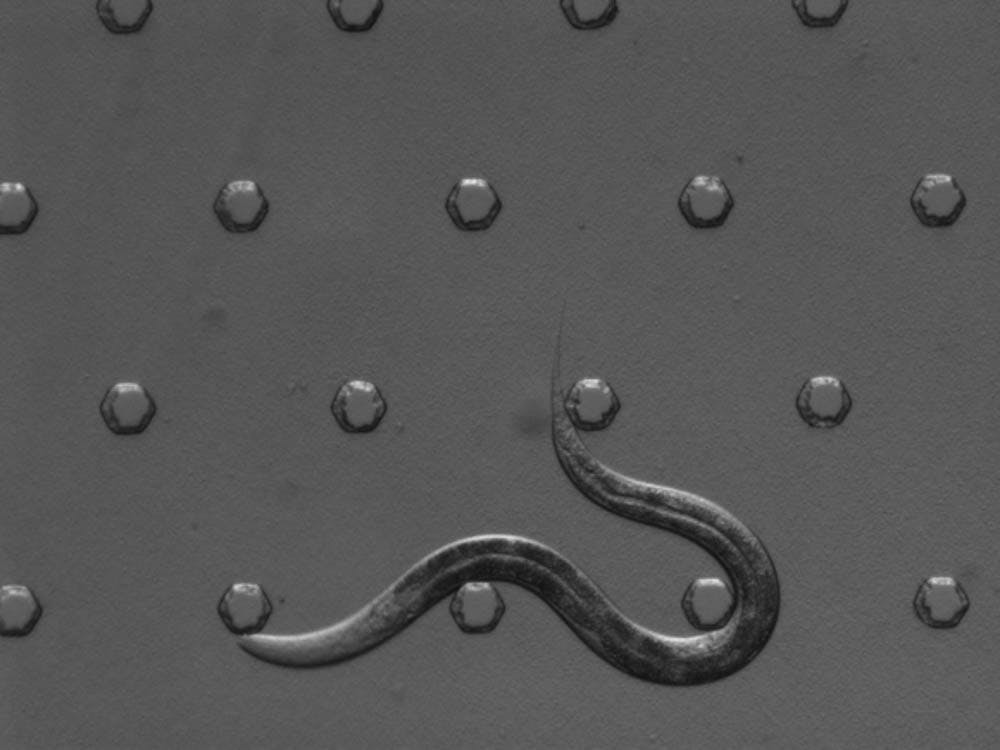Brown researchers studying the degeneration of neurons in worm models with amyotrophic lateral sclerosis recently found that different types of neurons undergo different mechanisms of decay.
Their paper focused on developing models to study how the SOD1 gene, which is associated with ALS, affects neurons and their degeneration. The findings contest the commonly accepted idea that all neurons affected by ALS degenerate in the same way, according to Saba Baskoylu, the lead author of the project. Previous worm models were not able to examine how this single gene affects the nervous system of C. elegans, a species of roundworm, she said.
For the past six years, a team of researchers led by Anne Hart, professor of neuroscience, has been developing C. elegans models to study neurodegeneration caused by ALS. “Why use worms? Because they are much less expensive to work with than cell or larger animal models — and neuron(s) act pretty much the same way in all animals,” Hart wrote in an email to The Herald. The worm models are also much faster and simpler to use than those of other organisms, she added.
The project began with the goal of developing more accurate C. elegans models to study ALS progression but led to the discovery that neurons undergo different pathways of degeneration. “Our aim was to create a model in C. elegans that could shed light on why specific neurons die in ALS — and to more accurately represent the human disease in a small invertebrate model,” Hart said.
Using a genetic engineering technique to modify the SOD1 gene, the researchers were able to create animal models to study the disease in a simpler organism, Baskoylu said.
The researchers labeled the worm’s neurons with fluorescence and used the visible color to detect the presence of specific neurons, looking for signs of degeneration. “When we first generated (the modified worms), they looked quite okay, and we didn’t see any of these defects … until we exposed the animals to stress,” which led to neurodegeneration, Baskoylu said.
One of the study’s key findings provides evidence that the two different types of neurons affected by ALS — glutamatergic and cholinergic neurons — might decay through different mechanisms, Baskoylu said. When the naturally-occurring, unaltered gene was put back into the glutamatergic neurons, the neurodegeneration stopped and the cells were “rescued,” but when this gene was put back into the cholinergic neurons, the damage could not be stopped.
In the future, new projects could look at ways to combat this degeneration, Baskoylu said. “Now that we have neurodegeneration in these two types of neurons, we can attempt to rescue these degeneration defects,” she said.
These “models for ALS — and other diseases — will provide unique insights into why neurons die and help us find ways to stop this. We are working with our collaborators at Brown and elsewhere to harness these models to understand this devastating, incurable disease,” Hart wrote.
The study succeeded at developing a simple system to study ALS and was “a very well done, impressive piece of work,” said Kenneth Fischbeck, a neurologist at the National Institutes of Health.
“It’s surprising that the loss and gain (of gene function) work on different neurotransmitter systems separately. That’s new to me, and I think maybe to the field,” he said. This research could be helpful for the development of new ALS treatments by potentially using the worms to test out new therapies, he noted.





